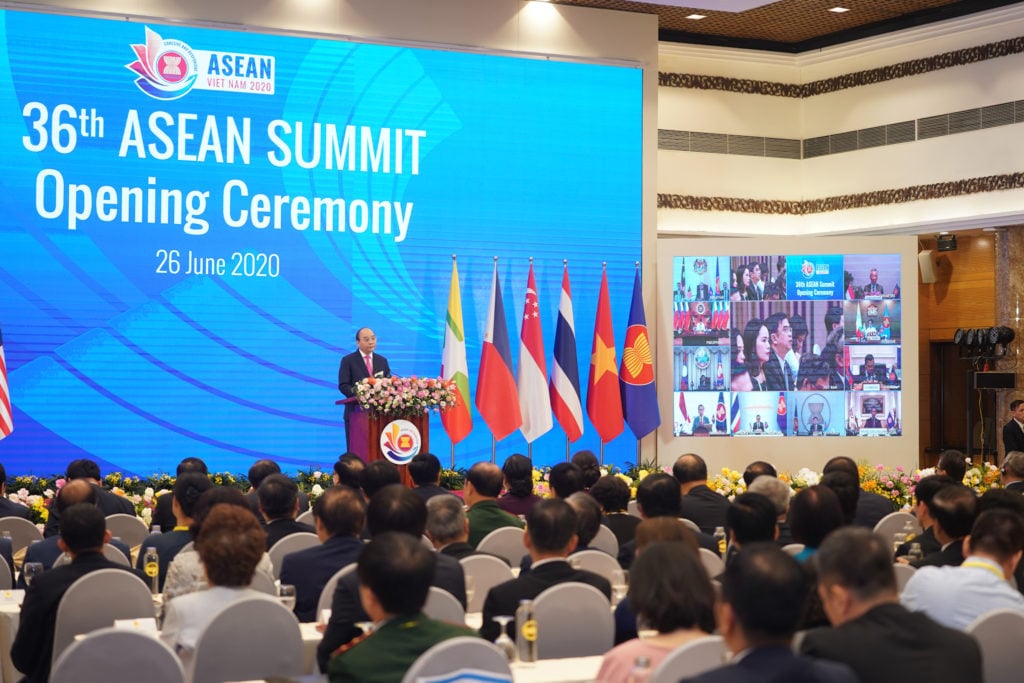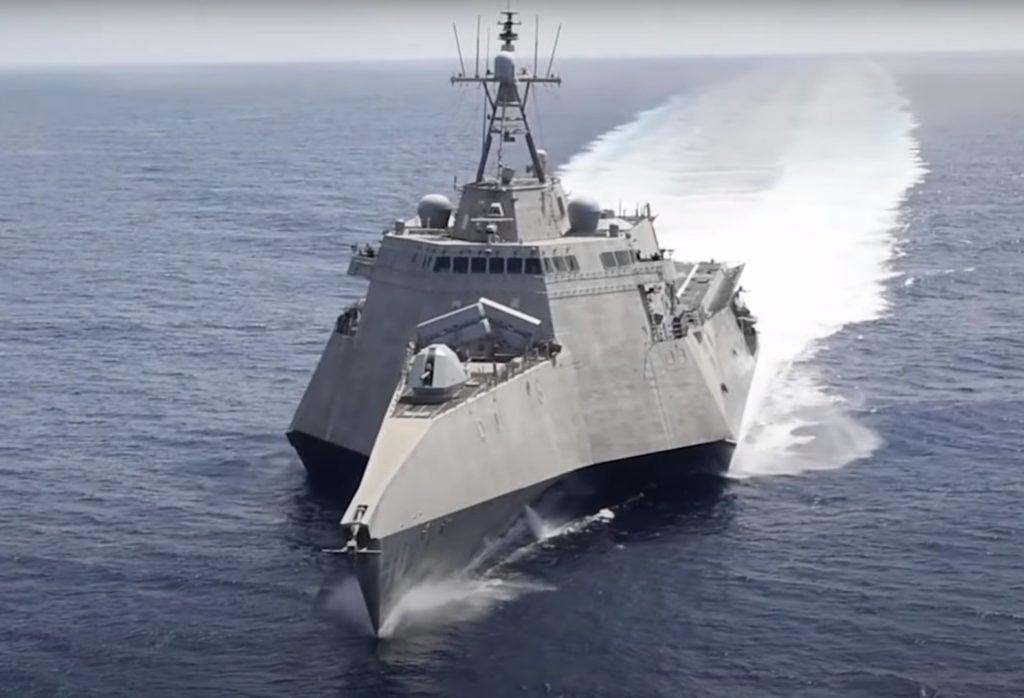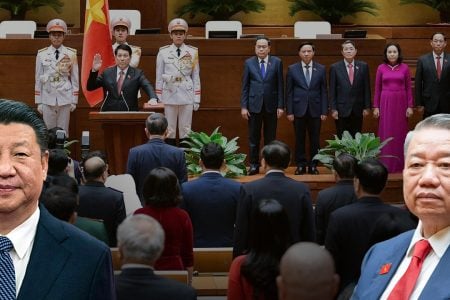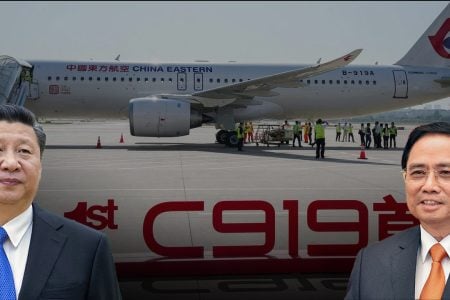
Just two days after the 36th ASEAN Summit issued a statement expressing concern about the complicated situation in the East Sea (South China Sea), the China Maritime Safety Administration announced the military exercise around the Hoang Sa (Paracels) on July 1-5. China issued a warning „during the exercise, no ships are allowed to navigate in the training area and all ships must follow the instructions of the command ships in that area.“ This is a clear violation of international law. China’s warning comes from civilian authorities, not the defense ministry, but the message is aimed mostly at the US Navy.
Every year, China still holds a military exercise around the Paracels to consolidate and assert control of the area. The new move follows a series of recent provocations and encroachments by Beijing in the South China Sea recently against its neighboring countries, amid a global effort to cope with the COVID-19 pandemic. .
Exercises to „retaliate“ the presence of the US Navy
In addition to the US Secretary of State’s adhesion of ASEAN’s position and condemnation of China’s intention to monopolize the South China Sea, two US aircraft carriers, USS Nimitz and USS Ronald Reagan conducted joint exercises in Philippine maritime area on June 28. According to Rear Adm. George Wikoff, commander of the US Navy’s No. 5 Aircraft Carrier Task Force, the exercise aimed at strengthening America’s „active, flexible and sustainable commitments“ in national agreements with allies and partners in the Indo-Pacific region, as well as „readiness to face those who defy international practices.“
The „challenger of international practices“ that Mr. Wikoff did not speak out clearly, is understood to refer to China.
Earlier, just a week, two aircraft carriers USS Nimitz and USS Theodore Roosevelt conducted similar coordination exercises of the same scale. According to the Japan Times on June 29, it is very rare for all three US aircraft carriers to carry out joint drills at the same time, and even rarer when two carriers are involved in such a short period of time.

The Japan Times quoted Collin Koh, a maritime security researcher at S. Rajaratnam Institute for International Studies in Singapore, saying the US decision was a blow to China, which believes that the US presence in the region was hit hard by the COVID-19 pandemic, and reassured Washington’s allies and partners. He also said that although there is no clear evidence of a direct link between the dispatch of these two aircraft carriers and the ASEAN summit, „it should not be denied“ because the military training activities in the past had been planned in advance and tied to events.
According to a Chinese research institute, the eastern gateways in the South China Sea and surrounding waters have witnessed a series of military operations in recent weeks, including the mission of US spy planes.
Greg Poling, Director of the Asia Maritime Transparency Initiative (AMTI, based in Washington), said that China’s exercise in waters that Vietnam also claimed sovereignty was not unusual, but worrying. He stressed: “Despite the global pandemic, China has repeatedly committed provocative acts in the South China Sea. Beijing seems determined to escalate instead of trying to calm the situation.”
Beijing is angry because the US has increased naval movement through these international waters. Although U.S. Navy action is essential to encourage weaker nations in the region that the US will uphold the principle of freedom of navigation in international waters and no country can prevent it. It is a basic principle of the international law system that has brought peace, prosperity and continuous progress since 1945.
Serving Beijing’s ambition
In addition, the organization of many exercises is also aimed at improving the operational readiness of the Chinese navy (and possibly also the capacity of aircraft carriers). The exercise also seeks to formalize Beijing’s claim to the Paracels. Chinese President Xi Jinping wants to send a message through this exercise, Beijing is enough to threaten the Philippines, Vietnam, Indonesia, and Malaysia, countries that China thinks should not appear in this area if not allowed by China. In order to monopolize the abundant energy resources and benefits from fishing in this area, China has claimed nearly all of the South China Sea with its absurd „nine-dash line“ map. Despite being opposed by other nations for having no legal basis, China is still willing to dispatch warships and fishing vessels to infringe fishing rights even in waters belonging to other states.
With about $ 3.5 trillion worth of goods passing through the South China Sea each year, China knows that if China can control the waters, Beijing can use them to coerce political concessions from other countries. For example, China’s control of these waters would allow Beijing to ask Europe to use Huawei’s 5G network, forcing South Korea to reduce cooperation with the US and African countries to continue to accept the form of investment under China’s mafia style.
China is trying to do in the Indo-Pacific what the Japanese empire did in the 1930s. As the greed and arrogance of the Chinese Communist Party increases, ambition will also increase.
Many countries protested
On July 2, the US Department of Defense issued a statement protesting the US military exercise in the South China Sea. The statement posted on Defenese.gov stated: „The Ministry of Defense is concerned about China’s decision to conduct military exercises around the Paracels in the South China Sea on July 1-5.
The proposed exercise area includes disputed waters and territories. Conducting military exercises on disputed territory in the South China Sea is counterproductive for efforts to ease tensions and maintain stability. China’s actions will further destabilize the situation in the South China Sea. Similar drills violate China’s commitment under the 2002 Declaration of Conduct of the Parties in the South China Sea (DOC), which pledges to avoid activities that complicate or escalate the competition as well as affect peace and stability.“
The US Defense Department said the exercise was the latest in a series of Chinese actions to assert illegal maritime claims and harm its Southeast Asian neighbors in the South China Sea. China’s actions are contrary to the South China Sea’s pledge to not militarize the South China Sea, as well as its vision of a free and open Indo-Pacific region, in which all nations, large or large small, guaranteed sovereignty, uncompromising and able to pursue economic growth in accordance with international law.
The US Department of Defense said it would continue to monitor the situation „in the hope that China would limit militarization and coerce its neighbors in the South China Sea. We urge all parties to refrain from and do not have military activities that may worsen disputes in the South China Sea.“
On the same day, the Philippines and Vietnam criticized Beijing’s decision to hold military exercises in the South China Sea on July 2, arguing that the move could deepen international tensions in the strategic cargo route.
Vietnam’s Ministry of Foreign Affairs has sent a diplomatic note opposing China to conduct drills in serious violations of Vietnam’s sovereignty. In a statement on July 2, the ministry stated „Chinese exercises around the Paracels seriously violate Vietnam’s sovereignty.“ The ministry also noted Beijing’s actions detrimental to the relationship between China and ASEAN in efforts to negotiate the Code of Conduct in the South China Sea (COC), as well as to maintain peace, stability and coherence cooperation in this sea.
Meanwhile, Filipino Defense Minister Delfin Lorenzana said China’s plans for a five-day exercise in the waters surrounding the Paracels were „extremely provocative.“ According to Lorenzana, escalating tensions stemmed from Beijing’s aggressive behavior in the South China Sea.
Although the Philippines has no official territorial claims to the Paracels, Minister Lorenzana noted that the drills would trigger „alarm“ to all claimants in the South China Sea. Speaking at an online forum organized by the Philippines National Defense University, Lorenzana emphasized: „Chinese people can do what they want in their territorial waters and exclusive economic zone, but if they do that, (referring to the exercise) in disputed areas, it is very provocative behavior.”
According to Minister Lorenzana, despite the COVID-19 pandemic, tensions in the South China Sea continued. President Duterte has never enforced an arbitral tribunal’s decision. Instead, he sought closer bilateral ties with China, and away from the traditional Philippine ally America. However, Duterte government recently expressed dissatisfaction with China’s actions in the South China Sea, and has sided with other claimant states, including Vietnam. Minister Lorenzana denounced: „China is the most assertive and aggressive side of the claimant countries. Recently, Chinese ships – both military and civilian – have stepped up intrusions and harassment against the navy, the air force and the Philippine Coast Guard as well as Filipino fishermen.„
Vietnamese source: https://www.rfa.org/vietnamese/news/blog/what-does-china-want-when-holding-drills-in-paracels-07032020184608.html?fbclid=IwAR2U4t0AgGlDr1yYyNE-OC0Nvna6iXfWh5sHmKmkmx


























